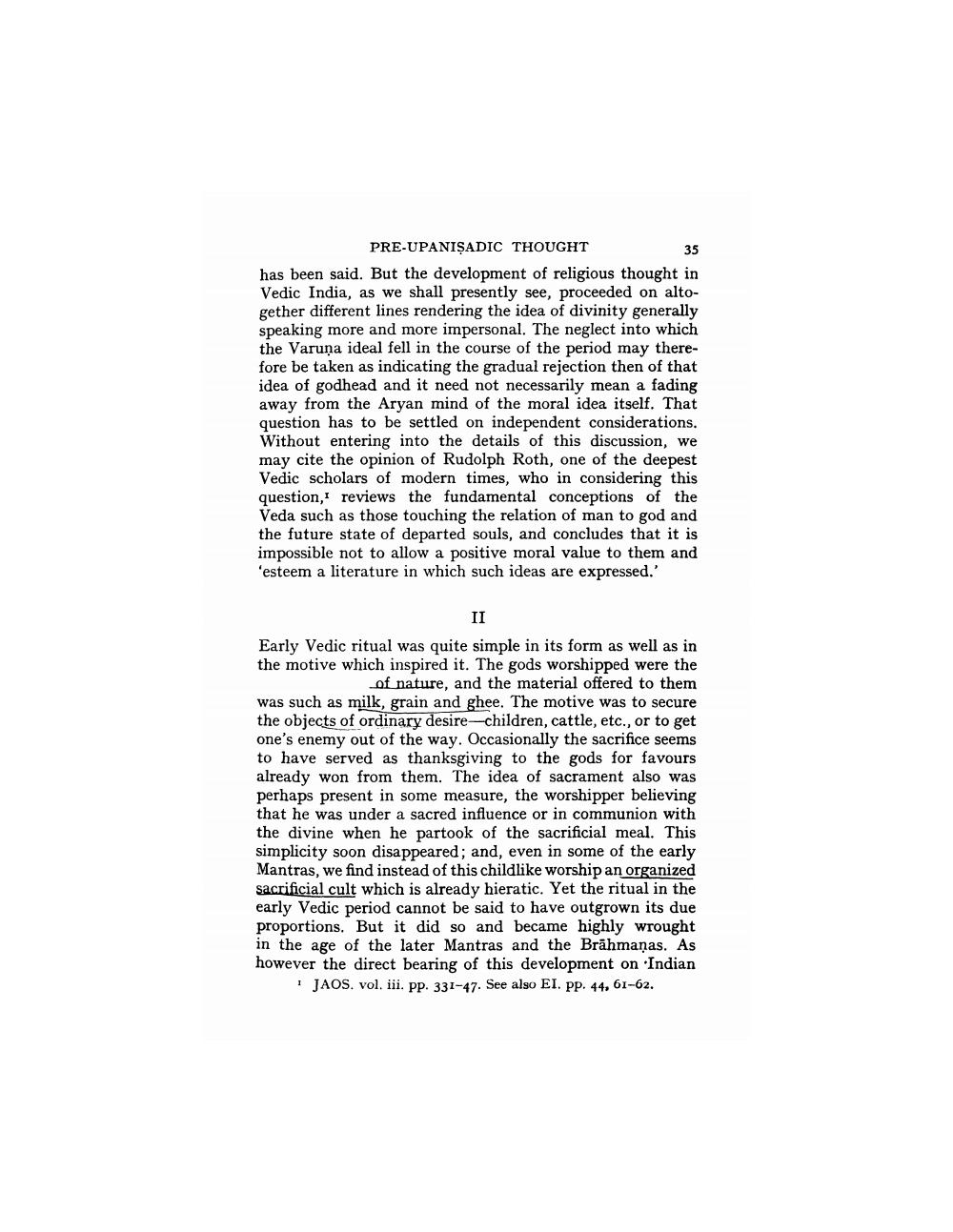________________
PRE-UPANIŞADIC THOUGHT
35
has been said. But the development of religious thought in Vedic India, as we shall presently see, proceeded on altogether different lines rendering the idea of divinity generally speaking more and more impersonal. The neglect into which the Varuna ideal fell in the course of the period may therefore be taken as indicating the gradual rejection then of that idea of godhead and it need not necessarily mean a fading away from the Aryan mind of the moral idea itself. That question has to be settled on independent considerations. Without entering into the details of this discussion, we may cite the opinion of Rudolph Roth, one of the deepest Vedic scholars of modern times, who in considering this question, reviews the fundamental conceptions of the Veda such as those touching the relation of man to god and the future state of departed souls, and concludes that it is impossible not to allow a positive moral value to them and 'esteem a literature in which such ideas are expressed.'
II
Early Vedic ritual was quite simple in its form as well as in the motive which inspired it. The gods worshipped were the of nature, and the material offered to them was such as milk, grain and ghee. The motive was to secure the objects of ordinary desire-children, cattle, etc., or to get one's enemy out of the way. Occasionally the sacrifice seems to have served as thanksgiving to the gods for favours already won from them. The idea of sacrament also was perhaps present in some measure, the worshipper believing that he was under a sacred influence or in communion with the divine when he partook of the sacrificial meal. This simplicity soon disappeared; and, even in some of the early Mantras, we find instead of this childlike worship an organized sacrificial cult which is already hieratic. Yet the ritual in the early Vedic period cannot be said to have outgrown its due proportions. But it did so and became highly wrought in the age of the later Mantras and the Brāhmaṇas. As however the direct bearing of this development on 'Indian
I
1 JAOS. vol. iii. pp. 331-47. See also EI. pp. 44, 61-62.




